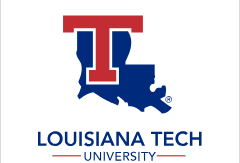Date of Award
Summer 8-23-2025
Document Type
Thesis
Degree Name
Master of Science (MS)
First Advisor
Simone Camel
Abstract
Food literacy skills can improve dietary intake in young adults as it provides them with the tools they need to make healthier food-related decisions. The benefits of improving food literacy includes the reduction in the risk of prevalent, preventable dietrelated diseases such as obesity, T2DM, heart disease, and other chronic diseases that plague the Unites States today. Previous literature reports primarily on college female samples. Because a large proportion of the samples in the available studies are female, the current literature may not reflect young adult men’s food literacy and its comparison to their overall diet quality. The purpose of this research study was to determine if young adult male university students’ food literacy skills were related to their diet quality. The objectives were to determine the young men’s food literacy skills and the diet quality and then compare the two with their eating behaviors. This study utilized an analytical cross-sectional study design with an electronic questionnaire. The electronic questionnaire was developed with Qualtrics Survey software. The questionnaire contained the consent to participate and 41 items that included the Eating and Food Literacy Behaviors Questionnaire (EFLBQ), the Rapid Eating Assessment for Participants (REAP-S), researcher-developed questions, and demographic items. Measures of central tendency were calculated to characterize the variables. A Spearman’s rho correlation test was performed to determine the correlation between ELFBQ scores and REAP-S results. This was completed for the EFLBQ composite scores and for each factor individually. An ANOVA was run to compare ELFBQ scores and REAP-S results with Eating location, area of study, academic standing and cooking frequency. The Total REAP-S score was related positively correlated to the EFLBQ health and nutrition factor r(259) = .196, p= .001 and negatively to EFLBQ convenience factor r (259) = -181, p= .003. As the food literacy score increased, so did the frequency of evening meal preparation r(258 )=.239, p < .001. Food literacy was higher in students who ate at the table (EFLBQ score = 57.5), followed by in front of the television or phone (EFLBQ score = 54.7) and lastly, in the car (EFLBQ score = 44.8). In the validating study for the REAP-S tool by Johnson et al. (2018), an average score of 33.6 was found in a healthy population aged 18-50 years. In this current study, the average REAP-S score in this sample of male college students was 25.6, indicating a lower diet quality in the younger male adult population. The only difference seen in diet quality by academic standings was between freshman and juniors, with freshman having a better diet quality despite lower food literacy. This is consistent with the findings that diet quality decreases as age increases, as many universities now require freshman to purchase meal plans, giving freshman have access to hot meals, fruits and vegetables on a consistent basis. Freshmen had lower food literacy than juniors and graduate students. This may be related to the development of food skills as students move off-campus and begin to be responsible for their own meals on a daily basis. This supports the belief that food skills can be learned and can influence diet quality and ultimately support health promotion efforts. In conclusion, Food literacy and diet quality were positively related in this group of young adult male college students. Food literacy was higher in men who ate at the table, cooked an evening meal, and were older students. Food literacy is a skill that is learned, so providing young men with the correct tools through educational interventions may result in improved health outcomes.
Recommended Citation
Mayeux, Morgan Claire, "" (2025). Thesis. 152.
https://digitalcommons.latech.edu/theses/152

